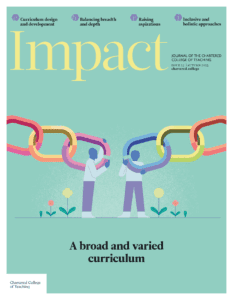From validation to implementation: Choosing a systematic synthetic phonics programme
Written by: Laura Brogan

9 min read
LAURA BROGAN, NATIONAL PHONICS LEADER, TWINKL EDUCATIONAL PUBLISHING, UK
Choosing a systematic synthetic phonics (SSP) programme is one of the most significant decisions that school leaders can make. With numerous options available, how can they feel confident in selecting the best fit for their students and staff? This article explores key factors to consider when making a strategic, evidence-informed choice.
The Education Endowment Foundation (EEF, 2021) highlights phonics as one of the most secure and best-evidenced areas of pedagogy, recommending that all schools use a systematic approach to teach it. In 2021, the Department for Education removed the widely used Letters and Sounds 2007 handbook from its list of validated phonics programmes, noting that it did not constitute a full SSP programme, and required schools to create their own materials and training (DfE, 2021). This prompted a new validation process, in which publishers submitted programmes against revised core crite
Join us or sign in now to view the rest of this page
You're viewing this site as a guest, which only allows you to view a limited amount of content.
To view this page and get access to all our resources, join the Chartered College of Teaching (it's free for trainee teachers and half price for ECTs) or log in if you're already a member.
- Baker S and Wood C (2020) Balancing systematic phonics with rich literacy experiences. Literacy 54(3): 139–147.
- Cremin T, Mottram M, Collins FM et al. (2014) Building Communities of Engaged Readers: Reading for Pleasure. Abingdon: Routledge.
- Department for Education (DfE) (2021) The removal of Letters and Sounds 2007 from the Department’s list of validated phonics programmes – teachers’ questions answered. Available at: https://educationhub.blog.gov.uk/2021/05/the-removal-of-letters-and-sounds-2007-from-the-departments-list-of-validated-phonics-programmes-teachers-questions-answered (accessed 4 April 2025).
- Department for Education (DfE) (2023) The reading framework: Teaching the foundations of literacy. Available at: www.gov.uk/government/publications/the-reading-framework-teaching-the-foundations-of-literacy (accessed 11 April 2025).
- Department for Education (DfE) (2024) Choosing a phonics teaching programme. Available at: www.gov.uk/government/publications/choosing-a-phonics-teaching-programme (accessed 4 April 2025).
- Education Endowment Foundation (EEF) (2019) Putting evidence to work: A school’s guide to implementation. Available at: https://educationendowmentfoundation.org.uk/education-evidence/guidance-reports/implementation (accessed 11 April 2025).
- Education Endowment Foundation (EEF) (2021) Teaching and Learning Toolkit: Phonics. Available at: https://educationendowmentfoundation.org.uk/education-evidence/teaching-learning-toolkit/phonics (accessed 4 April 2025).
- Greany T and Maxwell B (2017) Evidence-informed innovation in schools: Aligning collaborative research and development with high-quality professional learning for teachers. International Journal of Innovation in Education 4(2/3): 147–170.
- Guskey TR (2002) Does it make a difference? Evaluating professional development. Educational Leadership 59(6): 45–51.
- Gutman LM and Schoon I (2013) The impact of non-cognitive skills on outcomes for young people: A literature review. Education Endowment Foundation. Available at: https://discovery.ucl.ac.uk/id/eprint/10125763/1/Gutman_Schoon_%202013%20Non-cognitive_skills_literature_review_.pdf (accessed 22 July 2025).
- Hargreaves A (2012) Professional Capital: Transforming Teaching in Every School. Abingdon: Routledge.
- Johnston R and Watson J (2005) The effects of synthetic phonics teaching on reading and spelling attainment: A seven year longitudinal study. Scottish Executive Education Department. Available at: https://dera.ioe.ac.uk/id/eprint/14793/1/0023582.pdf (accessed 22 July 2025).
- Owston L (2023) Getting all pupils reading. In: Ofsted blog. Available at: https://educationinspection.blog.gov.uk/2023/08/30/getting-all-pupils-reading (accessed 13 April 2025).
- Rose J (2006) Independent review of the teaching of early reading. Department for Education and Skills. Available at: https://dera.ioe.ac.uk/id/eprint/5551/2/report.pdf (accessed 22 July 2025).
- Sweller J (1988) Cognitive load during problem solving: Effects on learning. Cognitive Science 12(2): 257–285.
- Torgesen JK, Alexander AW, Wagner RK et al. (2001) Intensive remedial instruction for children with severe reading disabilities: Immediate and long-term outcomes from two instructional approaches. Journal of Learning Disabilities 34(1): 33–58.
0
0
votes
Please Rate this content
Please login to comment
0 Comments
Oldest
Newest
Most Voted
Inline Feedbacks
View all comments










